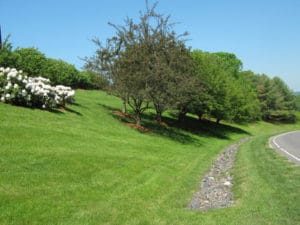 Cape Cod is an iconic New England vacation spot with beautiful beaches, sunny skies, magnificent marshes…and a serious water problem. Cape Cod has experienced contaminated drinking water throughout its history, and problems continue to this day. Pharmaceuticals, consumer product chemicals, and other emerging contaminants can be found in many of the public drinking water wells on Cape Cod. The Cape has 560 miles of coastline, 1,000 kettle-hole ponds, and one sole source aquifer containing two major and four smaller lenses, all in jeopardy.
Cape Cod is an iconic New England vacation spot with beautiful beaches, sunny skies, magnificent marshes…and a serious water problem. Cape Cod has experienced contaminated drinking water throughout its history, and problems continue to this day. Pharmaceuticals, consumer product chemicals, and other emerging contaminants can be found in many of the public drinking water wells on Cape Cod. The Cape has 560 miles of coastline, 1,000 kettle-hole ponds, and one sole source aquifer containing two major and four smaller lenses, all in jeopardy.
Other than Long Pond in Falmouth, all the drinking water on the Cape comes from the underground aquifer. Cape Cod has immensely permeable soil consisting of sand and gravel that make the Cape Cod Aquifer extremely susceptible to contamination. Unlike other parts of Massachusetts where groundwater may take a decade to travel a foot underground, groundwater on the Cape can travel a foot a day. In many parts of the Cape, the water table only sits ten feet or less below the surface, which means that whatever water lands on the ground could potentially contaminate water very quickly.
Septic Issues on the Cape
The most widespread problem facing Cape Cod’s water quality is septic discharge. Eighty-five percent of residents on the Cape use home septic systems to treat wastewater, and everything flushed down the toilet in these systems flows into a septic tank that is typically buried in the backyard. In the tank, solids settle to the bottom, while the liquids discharge into a leach field near the tank. This liquid then trickles down into the ground where, hopefully, it is diluted, filtered, and digested by microorganisms in the soil. It is important to note that these systems do not remove the emerging contaminants. While these systems typically function properly in rural areas, they tend to falter in more populous areas with high groundwater table. With Cape Cod’s population skyrocketing during summer months, coupled with highly permeable soil and a high water table, water contamination can be a huge issue.
The Environmental Side of the Problem

Besides the obvious human health risks associated with contaminated water from septic systems, the implications of contamination have taken a toll on Cape Cod’s economy and environment. The excess nitrogen and phosphorous in septic discharge, along with stormwater runoff, have created toxic algae blooms in many lakes and along the coastline. These blooms not only smell and look awful, they have caused mass die-offs of fish and are a threat to human health. The Cape has closed off swimming ponds but has not yet seen blooms as severe as Florida’s summertime blue-green algae crisis. Cape Cod’s seasonal economy could be crippled if algae blooms reached the level of those seen in Florida.
Finding a Solution
For over a decade, Cape Cod towns have struggled to solve water contamination problems and restore the health of their estuaries. Many towns developed plans to provide wastewater infrastructure to homes and businesses to restore water quality. Unfortunately, few of these plans have actually been implemented due to their capital costs ranging from $100-$700 million each. The total needed capital investment is over $2 billion for infrastructure better suited for the fluctuating Cape Cod population.

In support of a significant Cape Cod water quality initiative, Governor Charlie Baker certified a plan, developed by the Cape Cod Commission — the regional land use planning, economic development, and regulatory agency created in 1990 to serve the citizens and 15 towns of Barnstable County — and approved by the EPA, called the 208 Plan. The 208 Plan is a watershed-based approach to restore embayment water quality on Cape Cod. The plan recommends strategies, regulatory reforms, and a process for communities to reduce or eliminate excess nitrogen, the primary concern with septic discharge. The plan considers remediation and restoration approaches, in addition to source reduction. The plan also identifies areas with suitable development density for collection systems and wastewater treatment plants and identifies areas best suited for lower cost watershed and embayment technologies.
Another important initiative for Cape Cod’s water supply is the Cape Cod Regional Wastewater Management Plan. The Cape Cod Commission received nearly $3.5 million from the state to implement a wastewater plan that addresses Cape Cod’s water quality issues, and restoring those waters to levels where they are able to meet state water quality standards. The plan represents a framework and set of tools for identifying several solutions for each watershed of the Cape. The goal is to advance decision making toward cleaner water through implementation of sustainable and affordable approaches. The plan is a living document which will be updated frequently to reflect new knowledge, information, decisions, and community input.
To help address stormwater pollution, MassDEP issued the revised General Permit for Small Municipal Separate Storm Sewer Systems (MS4s) this past April, which goes into effect on July 1, 2017. In addition to the six Minimum Control Measures included in the original 2003 Permit, the 2016 Massachusetts MS4 General Permit also specifically includes limits to Total Maximum Daily Loads (TMDLs). TMDLs set pollution limits that represent the maximum amount of pollutant a specific body of water can handle before marine life, wildlife, and/or recreational uses become adversely affected.
 An important stormwater initiative to improve the Cape’s water quality is Project STORM (Stormwater Outreach for Regional Municipalities). Coordinated by the Cape Cod Commission water resources staff, Project STORM is a collaborative effort of Cape Cod towns to pool resources and solutions to mitigate the impacts of stormwater and to educate the general public on effective means to reduce stormwater pollution, including structural and non-structural Best Management Practices (BMPs) as well as Low Impact Development (LID) concepts. The project also provides assistance to towns that must comply with EPA National Pollutant Discharge Elimination System (NPDES) Phase II stormwater regulations.
An important stormwater initiative to improve the Cape’s water quality is Project STORM (Stormwater Outreach for Regional Municipalities). Coordinated by the Cape Cod Commission water resources staff, Project STORM is a collaborative effort of Cape Cod towns to pool resources and solutions to mitigate the impacts of stormwater and to educate the general public on effective means to reduce stormwater pollution, including structural and non-structural Best Management Practices (BMPs) as well as Low Impact Development (LID) concepts. The project also provides assistance to towns that must comply with EPA National Pollutant Discharge Elimination System (NPDES) Phase II stormwater regulations.
In Conclusion
Cape Cod is faced with a very unique and challenging water problem. While there is no go-to solution to Cape Cod’s water troubles, communities and government are finally working together to fund and plan wastewater improvements. Through collaboration and studies, Cape Cod communities can now put plans in place for collection systems, additional wastewater treatment facilities, and all around best practices for preserving their local waterways. Protecting Cape Cod’s groundwater is critical to the environmental and economic health of the Cape. It is also a crucial step to ensure that future generations are able to enjoy the same endless coastlines, beautiful skies, sandy beaches, and memorable vacations that have made Cape Cod a beloved summer destination since the 19th century.

 In addition to the six Minimum Control Measures included in the original 2003 Permit, the 2016 Massachusetts MS4 General Permit also specifically includes limits to Total Maximum Daily Loads (TMDLs). TMDLs set pollution limits for affected waterways. These pollution limits represent the maximum amount of pollutant a specific body of water can handle before marine life, wildlife, and/or recreational uses become adversely affected. Because stormwater has the potential to have a significantly negative impact on waterways, TMDLs are a necessary protection measure. Unfortunately, addressing stormwater contributions to TMDLs will require that many communities make some structural and treatment modifications to their stormwater systems, and these take both time and money.
In addition to the six Minimum Control Measures included in the original 2003 Permit, the 2016 Massachusetts MS4 General Permit also specifically includes limits to Total Maximum Daily Loads (TMDLs). TMDLs set pollution limits for affected waterways. These pollution limits represent the maximum amount of pollutant a specific body of water can handle before marine life, wildlife, and/or recreational uses become adversely affected. Because stormwater has the potential to have a significantly negative impact on waterways, TMDLs are a necessary protection measure. Unfortunately, addressing stormwater contributions to TMDLs will require that many communities make some structural and treatment modifications to their stormwater systems, and these take both time and money. Fortunately, stormwater assessments that are conducted by licensed professional engineers, such as Tata & Howard’s MS4 Compliance Assessments, provide a significant return on investment. As part of the assessment, the entire system is meticulously evaluated for the most budget-conscious ways in which to fully meet compliance. Permit exclusions will also be assessed and all previous stormwater work will be documented to establish proper credit. The assessment also provides a well-planned course of action that is defendable when justifying projects and procuring funding.
Fortunately, stormwater assessments that are conducted by licensed professional engineers, such as Tata & Howard’s MS4 Compliance Assessments, provide a significant return on investment. As part of the assessment, the entire system is meticulously evaluated for the most budget-conscious ways in which to fully meet compliance. Permit exclusions will also be assessed and all previous stormwater work will be documented to establish proper credit. The assessment also provides a well-planned course of action that is defendable when justifying projects and procuring funding.